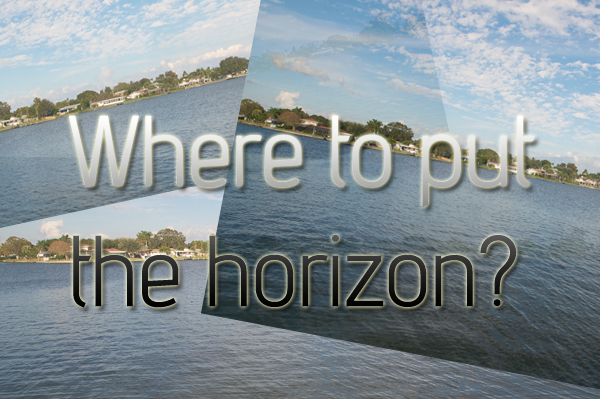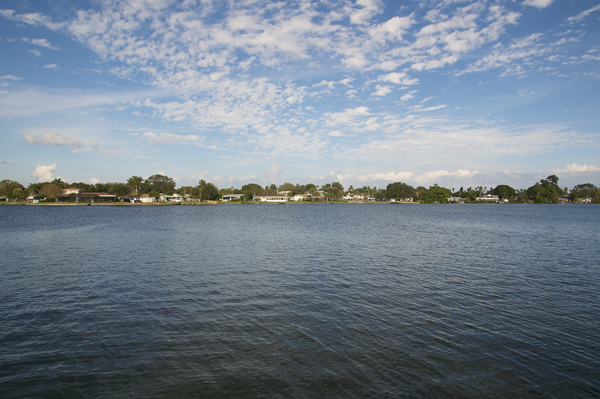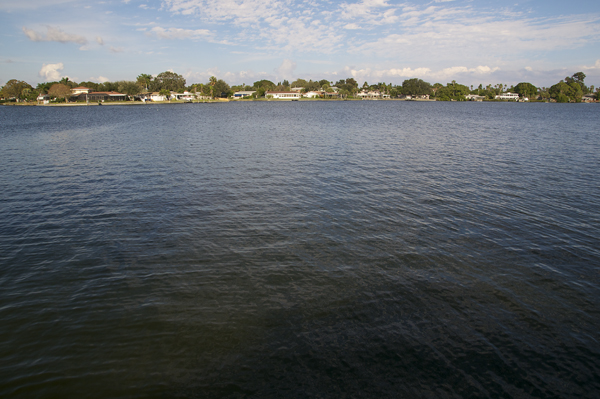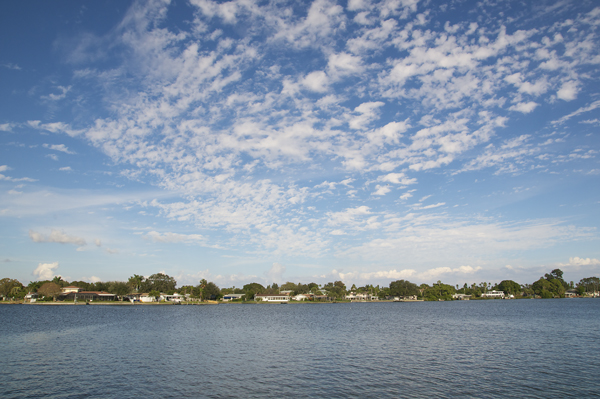
When composing a photograph, especially a landscape shot, everything needs to be considered, and that includes where to put the horizon. By where the horizon is placed in the frame determines much of the overall impression of the photo. One simple way to help with horizon placement is to follow the rule of thirds, by that I mean placing the horizon in the lower or upper third of the frame often results in an appealing shot.
 The horizon dead smack in the middle, not a very exciting shot.Without any formal photography training, most of the time picking up a camera and making a landscape shot of sky and water would result in the above image with the horizon dead centered. Unless there is some kind of cool reflection or vertical symmetry, this results in a boring shot. The photographer has not chosen which to feature more of in the frame, the sky or the water?
The horizon dead smack in the middle, not a very exciting shot.Without any formal photography training, most of the time picking up a camera and making a landscape shot of sky and water would result in the above image with the horizon dead centered. Unless there is some kind of cool reflection or vertical symmetry, this results in a boring shot. The photographer has not chosen which to feature more of in the frame, the sky or the water?
 Placing the horizon in the upper third showcases the foreground.In the above shot the horizon is placed in the upper third of the frame, showing that the photographer chose to feature the water. Putting the horizon in the upper third highlights the foreground. So you have to ask yourself, is the foreground nicer than the background? If so, compose with the horizon in the upper third. However, for most water shots here in Florida, including the one above, the water is not as beautiful as the sky so the shot can end up looking like a lot of brown with a peak of blue at the top.
Placing the horizon in the upper third showcases the foreground.In the above shot the horizon is placed in the upper third of the frame, showing that the photographer chose to feature the water. Putting the horizon in the upper third highlights the foreground. So you have to ask yourself, is the foreground nicer than the background? If so, compose with the horizon in the upper third. However, for most water shots here in Florida, including the one above, the water is not as beautiful as the sky so the shot can end up looking like a lot of brown with a peak of blue at the top.
 Putting the horizon in the lower third often results in the best Florida landscape compositionFinally the horizon is placed in the lower third showing more of the beautiful afternoon sky and less of the nondescript water. This framing showcases the best feature of the shot, the sky, and just enough water to let the viewer know it is a waterfront shot.
Putting the horizon in the lower third often results in the best Florida landscape compositionFinally the horizon is placed in the lower third showing more of the beautiful afternoon sky and less of the nondescript water. This framing showcases the best feature of the shot, the sky, and just enough water to let the viewer know it is a waterfront shot.
So when framing your shot, decide what you want to feature, and then place the horizon accordingly.
